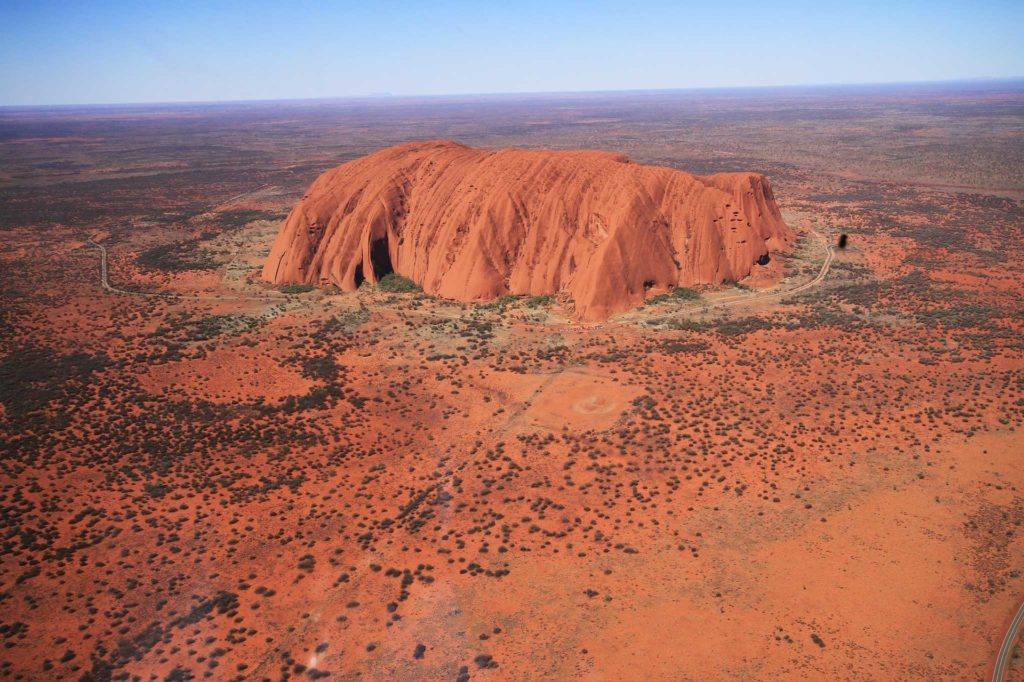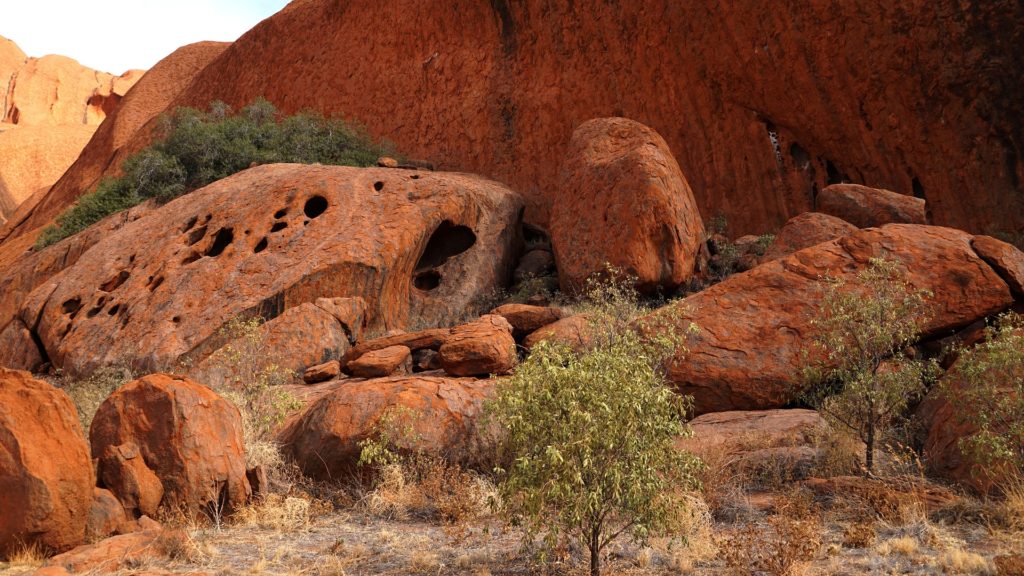Uluru—or Ayers Rock—is one of the most well-known sites in Australia’s Northern Territory. This massive red-gold rock is approximately 3,381 feet above sea-level, and stretches along the land for 5.8 miles. Since it has become one of the most recognizable sites in Australia, and because of its history, it has been declared a UNESCO World Heritage Site. But what makes this rock so special?

According to the Indigenous group known as the Pitjantjatjara people, Uluru—as it is called in their language—is sacred. They are considered the traditional owners or caretakers of the rock itself. According to Pitjantjatjara mythology, the rock is part of the creation myths, which is why it must be preserved.
Visitors to the area used to be able to go up Uluru and camp around the edges of it, but this is no longer possible. Instead, visitors can see the rock from afar and admire the rock paintings in the area. Many spots around Uluru are still used by its traditional owners in ceremonies.

While most of the rock itself is off-limits, it is still worth a visit. You can get there by airplane, or by driving to Alice Springs, which is the closest city.

